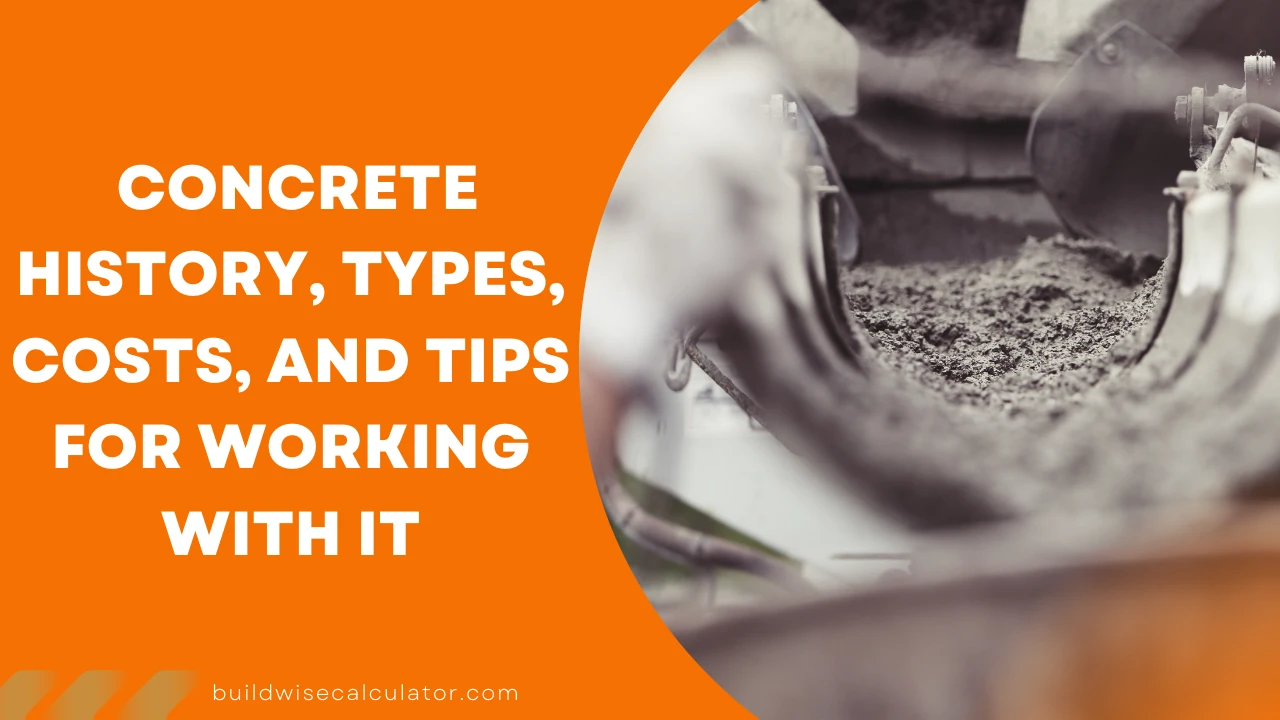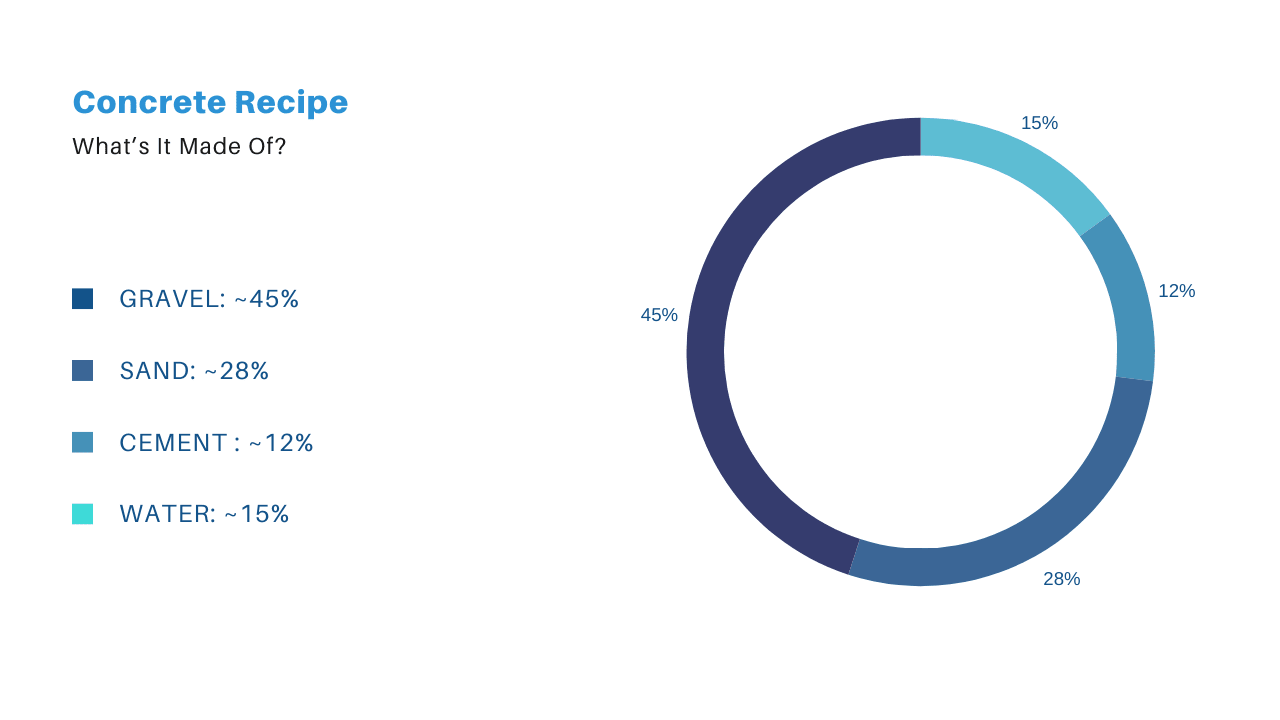What is Concrete? History, Types, Costs, and Tips for Working with It
Publish on: 18-Mar-2025

Concrete is an amazing material, we can't even imagine construction without it. We see concrete every day. It serves as the base for our homes, walkways and bridges. However, what is concrete and why is it so important?
What is concrete?
Concrete is a mixture of cement, water and some rough aggregate such as sand, gravel or crushed stone. These ingredients form a paste that turns into a strong, long-lasting solid after drying. Concrete is the preferred material for everything from skyscrapers to driveways due to its strength and workability.
History of Concrete
Concrete is not a new material. Its origins go back thousands of years. The ancient Romans were among the first to use concrete when they built the Pantheon and aqueducts. So what's the secret? A mixture of water, lime and volcanic ash.
Portland cement was invented in the 19th century. This new type of cement transformed the construction industry, making concrete stronger and more reliable. Today, concrete is the world's most popular building material, used to build the cities and infrastructure we depend on every day.

Types of concrete and their uses
There are many types of concrete, each with different properties and uses. Here is a brief description of some of the common types:
- Normal strength concrete: This is the most common type. It is used in sidewalks, driveways or small buildings. It is readily available.
- High-strength concrete: Designed to withstand heavy weight, so it is used for skyscrapers and bridges.
- Stamped concrete: This looks beautiful because it is made to mimic brick, stone or tile. Great for patios or pool surrounds.
- Reinforced concrete: Steel bars or mesh are added to make it stronger – perfect for large things like parking garages.
- Pervious concrete: Water can flow right through it, making it suitable and convenient for driveways or walkways.
- Lightweight concrete: Lightweight materials are used to make this, so it's good for insulation or walls.
How Much Does It Cost?
Cash-wise, it’s all over the place depending on what you need, where you are, and how much you’re pouring. Here’s the scoop:
- Per Cubic Yard: Usually 100 to 150 bucks.
- Per Cubic Foot: Breaks down to 4 to 6 bucks.
- Extra Costs: Delivery ain’t free, labor adds up, and if you want fancy colors or strength boosters, that’s more dough.
Small driveway? Maybe 1,000 to 2,000. Big foundation? Tens of thousands, easy.
My buddy cheaped out once - cracked in weeks. Pay for the good stuff, trust me.
What’s It Made Of?
Here’s the breakdown:
- Cement: Keeps everything stuck together.
- Sand: Plugs up the small spaces.
- Gravel or Crushed Stone: Gives it some muscle.
- Water: Get the cement going so it sets up hard.
- Additives (if you want): Tweaks it to dry quickly or keep it flexible.
What’s It Made Of? Pie Chart Breakdown

Strength for Columns and Walls
How strong does it need to be? Depends on the building and local rules, but here’s the gist:
- Columns: Start with M25 (about 3625 psi). Tall or heavy stuff might need an M30 or M35.
- Walls: If they’re just dividers, M10 to M15 (1450–2175 psi) works. Load-bearing? Step up to M20 or M25.
Concrete vs. Mortar
They look alike, but they are not the same. Concrete is strong. It is used in foundations, walls, slabs. Mortar is soft, sticky - great for sticking bricks together. Concrete has larger pieces for strength; mortar has finer sand for binding.
Wrapping It Up
Concrete’s not just some boring material. It’s the backbone of everything we build. From Roman ruins to the roof over your head right now, it’s shaped the world. Whether you’re slapping together a DIY project or planning something big, knowing a bit about concrete can save you headaches and get it done right.
Recent Posts
How Much Rebar Do I Need? – A Complete Guide
How Much Epoxy Do You Need for Your Floor?
How to Calculate Yards of Concrete: A Simple Guide for Your Next Project
Difference Between Cement and Concrete: What You Need to Know
How to Calculate Tile for a Shower: A Beginner’s Step-by-Step Guide
Roof Truss: Picking the Right Thickness for Your Project
Concrete Slab Construction: Materials, Process & Thickness Rules
How to Calculate Square Feet of a Wall: A Beginner’s Step-by-Step Guide
What is Crown Molding? Its Pros, Cons, and Uses
What is MDF? A Complete Guide to Medium-Density Fiberboard
What is Asphalt, How is it Made, and How Much Does it Cost?
Drywall: A Complete Guide to Installation, Repair, and Finishing
Floor Wax Guide: Best Practices for Wood, Tile, and Hardwood Surfaces
Tar and Gravel Roofs: A Durable Roofing Solution for Modern Homes
What Masonry Sand Is and Its Uses
Building and Installing Post and Rail Fences
Best Plywood Types for Roofing: Strength, Durability, and Protection
Slope: Why It Matters and How to Define It
Roof Panels: Types, Installation, Costs, and Maintenance
Electric Fences: Installation, Costs, Testing, and How They Work
How to Calculate Acreage of an Irregular Lot?
How Deep Should a Patio Base Be? Expert Tips and Material Choices
Deck Posts: Types, Materials, Pros & Cons, and Spacing
Types of Stone Wall: A Complete Guide
Mild Steel vs Carbon Steel | What is the differance?
How Deep Should a Fence Post Be?
5052 vs. 6061 Aluminum: Key Differences and Best Uses
Carpet Area vs Built-Up Area: What’s the Difference and How to Calculate?